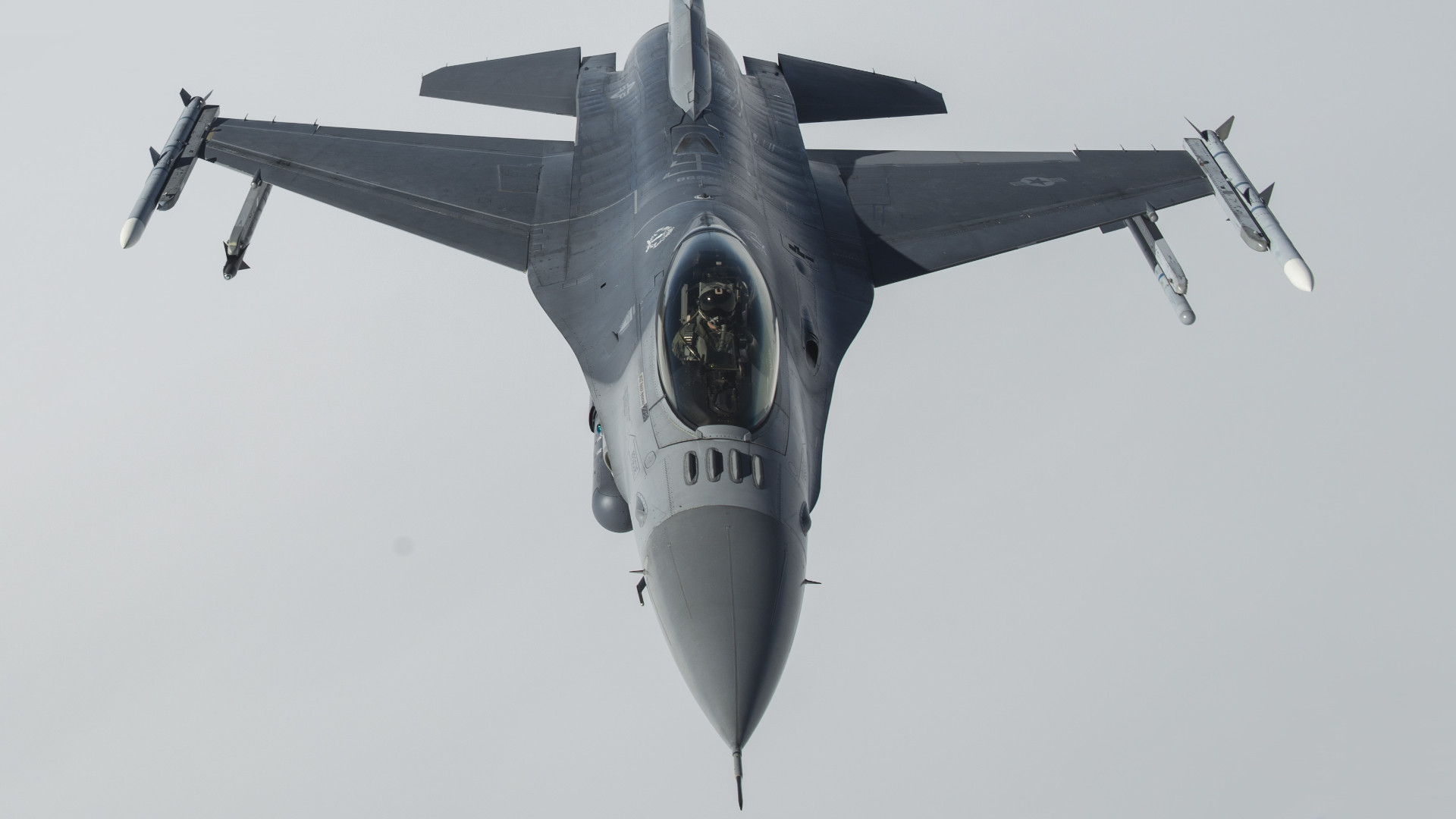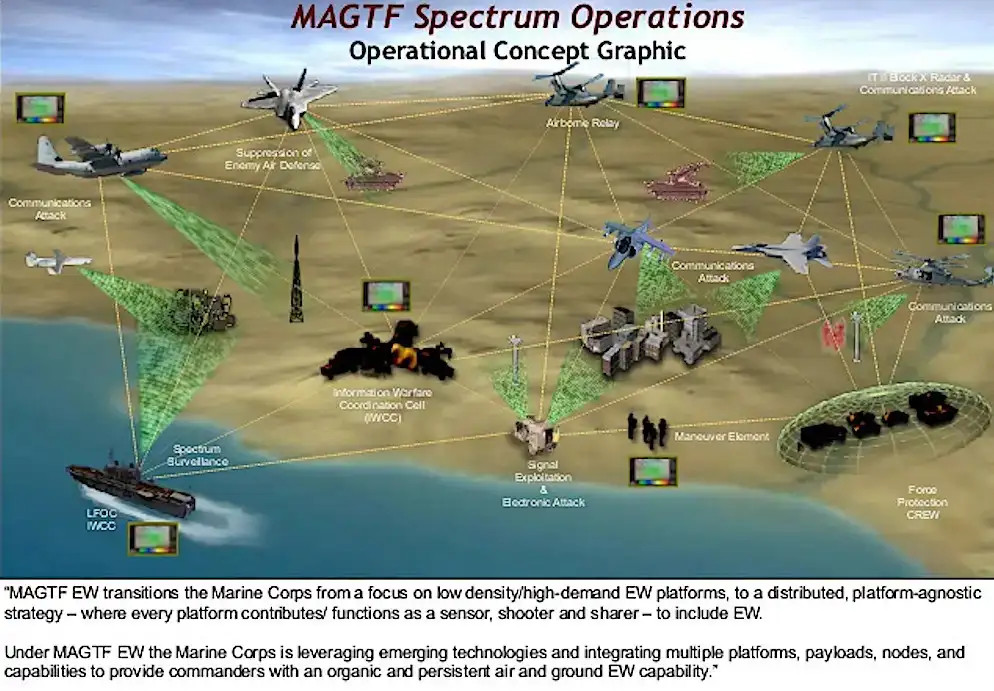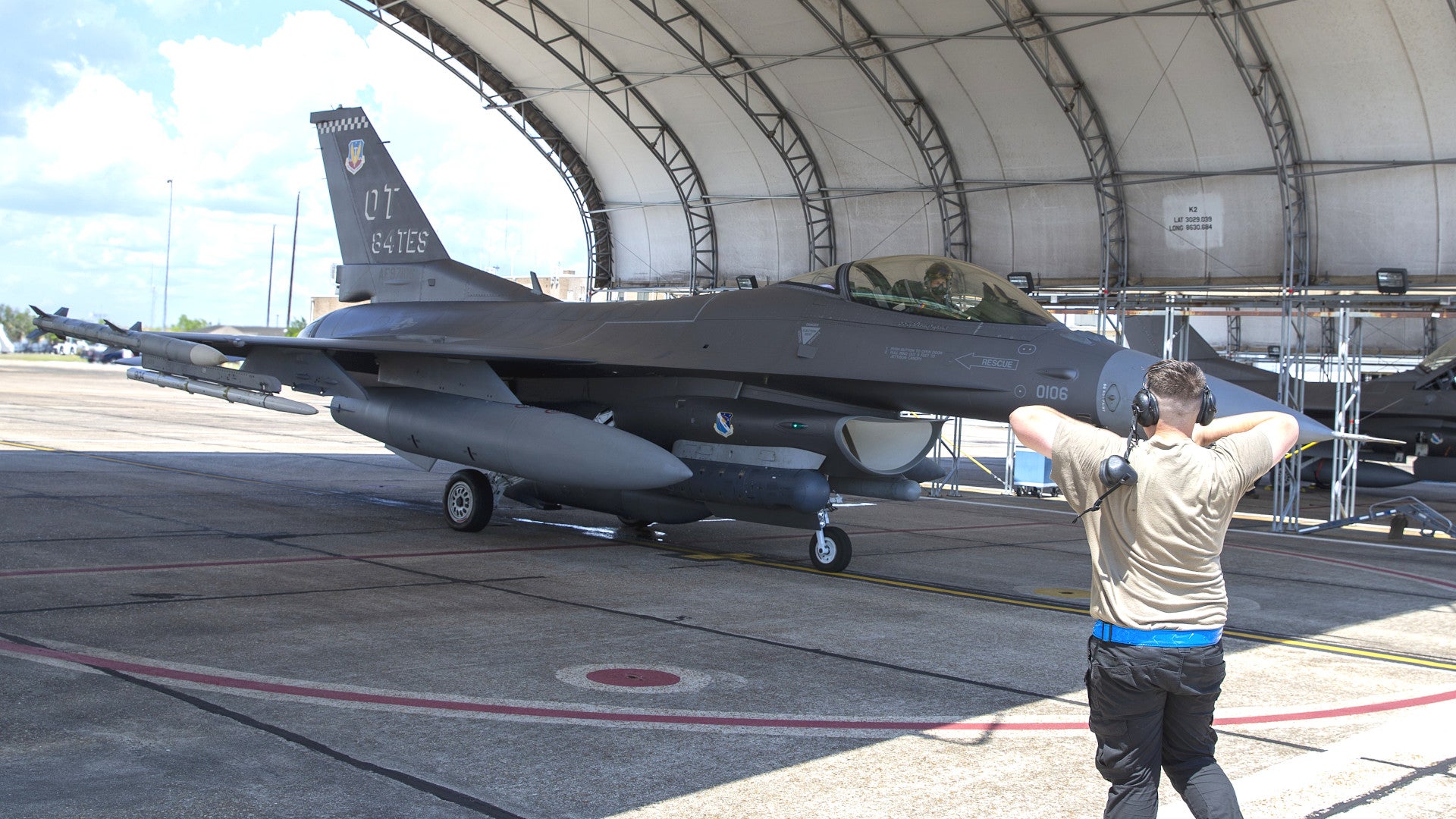The U.S. Air Force says it recently demonstrated the ability to send software updates for the electronic warfare system onboard an F-16C Viper fighter jet while that aircraft was in flight. The service also says that this test was an important first step toward developing a more expansive capability, which could feed into a broader concept known as Cognitive Electronic Warfare, or Cognitive EW, which you can read more about in detail here. Cognitive EW is centered on using advances in artificial intelligence, or AI, as well as machine learning, to much more rapidly develop and deploy improved electronic warfare capabilities, including new countermeasures, in response to emerging threats, possibly in real-time.
The Air Force announced the test on July 31, but did not say specifically when it had occurred. It did say that it was conducted recently from Nellis Air Force Base in Nevada as part of a larger demonstration of advanced capabilities being developed under the Advanced Battle Management System (ABMS) program. ABMS is a major service-wide initiative focused primarily on developing improved networking, remote targeting, and other associated capabilities, including advanced communications packages, as well as and low-cost unmanned platforms to carry them, and distributed networks of sensors to support various mission sets, among other things.

This recent electronic warfare test involved personnel at the Software Integration Laboratory at Hill Air Force Base in Utah, which is situated some 375 miles northeast of Nellis, sending an updated Mission Data File for the Countermeasures Signal Processor in the AN/ALQ-213 Electronic Warfare Management System (EWMS) on the F-16C from the 84th Test and Evaluation Squadron. The Viper, which was airborne at the time, received the new software via an unspecified, existing beyond-line-of-sight satellite communications system on the aircraft. The software for the jet’s Center Display Unit was modified for the test, but the Air Force says that no hardware changes were necessary.
“The ingenuity and skills of the Flight Test and Program Teams enabled a Viper to land with better capabilities than it took off with,” Air Force Colonel Tim Bailey, the service’s F-16 System Program Manager, said in a statement about the test. “This techno-marvel was done with existing systems in much of the Viper fleet, with no hardware mod. required. This is a significant first step!”
The AN/ALQ-213 is a central control system for the entire electronic warfare and countermeasures suite onboard an F-16. Depending on the exact configuration of the jet, this can include missile approach warning systems, radar warning receivers, towed expendable decoys, decoy flare and chaff launchers integral to the aircraft, as well as podded electronic warfare jammers. The EWMS can be set to an automatic mode, wherein specific available countermeasure capabilities are immediately employed after sensors linked to the control unit detect certain kinds of threats, such as incoming radar-guided missiles.

However, the system can only do that if the threat in question is one that it knows how to categorize based on the information in its internal database. Beyond the issue of dealing with previously unknown signal types, that library of information could also have a hard time identifying known signals that are being sent out a novel way or are simply muddled together with other emissions. That’s why this new remote updating capability, which the Air Force says began as “a bar-napkin idea,” is so important. “This proof-of-concept test demonstrated the ability for a pilot to properly correlate a previously unknown electronic threat in near real-time,” according to the Air Force.
“We believe this is the first time a fighter aircraft has received a software update and gained new capability all while in flight,” Air Force Lieutenant Colonel Zachary Probst, the commander of the 84th Test and Evaluation Squadron, said in a statement about the test. “This is a big deal. There’s a tactical need to be able to rapidly update software, especially mission data files because that’s what ties into our ability to identify, find, and defend ourselves against enemy threat systems.”
It’s hard to overstate how significant this new capability could be. Potential adversaries, including possible near-peer opponents, such as China and Russia, are constantly developing new air defense systems and associated sensors, as well as electronic warfare and cyber warfare capabilities. Some of those systems are then made available for export, though often with somewhat reduced functionality.
Altogether, it is not hard to imagine a scenario in which U.S. combat aircraft would fly into combat and be faced with previously unseen or otherwise little understood air defense and electronic warfare threats that existing countermeasures systems are not immediately capable of responding to. That’s where Cognitive EW comes in.
One envisioned near-term capability that is part of this broader concept is the ability for a wide variety of platforms, including aircraft, as well as various assets down below, to feed data about new threats into a larger electronic warfare ecosystem. Analysts and engineers can pick them apart and develop new or improved countermeasures, with advanced in artificial intelligence and machine learning helping to accelerate the process.

Since electronic warfare relies heavily on detecting and interpreting an enemy’s electromagnetic emissions and then sending out other signals to disrupt or otherwise confuse them, much of this work can be done entirely through software. This, in turn, opens up the possibility to send out upgrades for countermeasures systems digitally, including to deployed platforms, such as aircraft in flight.
The hope is that this process could eventually move so rapidly that, for example, combat jets on a mission could detect a new kind of threat, feed that information into the larger Cognitive EW network, and then get relevant updates for a system like the AN/ALQ-213 or the other components tied into it, all before returning to base. This could give American warplanes, as well as other assets, an immense advantage over opponents, who might see the effectiveness of their most advanced air and missile defenses and electronic warfare suites and tactics diminish very quickly.
The absolute “holy grail” of this concept is developing capabilities that would allow AI-driven electronic warfare systems to do much, if not all of this work themselves. This could eliminate the need for off-board support, such as remote updates, and enable electronic warfare packages to quickly start adapting, in real-time, to whatever new threats might pop up.
Real-time software updates for aircraft in flight, as well as the networks that would be necessary to support them, open up a path toward integrating other novel capabilities, as well. “The next step is to integrate high-speed internet into the F-16 thereby allowing F-16 pilots access to data from a classified cloud,” according to the Air Force. The Air Force has already demonstrated similar in-flight updating capabilities on a U-2S spy plane, as well as the ability of one of those aircraft to remotely leverage off-board computer processing capacity to more efficiently exploit intelligence data.
The Air Force has also previously announced its interest in integrating Cognitive EW capabilities into the Eagle Passive/Active Warning Survivability System, or EPAWSS. The service is in the process of upgrading its existing F-15E Strike Eagles with EPAWSS, which is also a feature on its new F-15EX Eagle II aircraft.

Some members of Congress are also pushing for the Air Force to explore a new, more robust tactical electronic warfare capability utilizing components of the Next Generation Jammer (NGJ) system that the U.S. Navy is currently developing. The F-15EX would be one option for an Air Force platform to carry podded NGJ variants and an “EF-15” configured in this way could be even more capable with the addition of Cognitive EW capabilities. The Navy, as well as other branches of the U.S. military and certain American allies and partners, could very well be interested in the Air Force’s work in this vein, as well. Australia, for instance, is already directly involved in the NGJ program.
It is, of course, important to remember that the infrastructure to support a true Cognitive EW capability, at least initially, will rely heavily on the Air Force being able to also demonstrate new and improved networking capabilities that are not only robust enough to handle updating a potentially large number of aircraft in flight remotely, but that are also secure and reliable enough to do so when it matters most. Traditional beyond-line-of-sight satellite communications, among other space-based capabilities, are already increasingly vulnerable to a variety of Russian and Chinese anti-satellite capabilities.
In the meantime, this recent test involving an F-16C shows that the Air Force is already laying the groundwork necessary to make potentially game-changing Cognitive EW capabilities a reality.
Contact the author: joe@thedrive.com
